The Pratt & Whitney F135 engine has returned to Arnold Engineering Development Complex for another round of testing, with a fresh engine component the focus of the latest efforts.
According to the US Air Force, the F135, which powers the F-35 Lightning II aircraft is currently undergoing testing in one of the Sea Level Test Cells at Arnold.
“Since late June, a newly-designed fan rotor installed in the engine has been subjected to endurance and Accelerated Mission Testing. Accelerated Mission Testing, or AMT, is a testing method used to rapidly age an engine, allowing for the identification and correction of issues before they would occur in normal use. Through AMT, a tested engine will accumulate several years of normal life in a short amount of time.”
“The whole purpose of an AMT is to basically put some wear and tear on the engine, if you will, some life, that simulates what it would have out in the field,” said Test Manager Don Corona, now retired.
“But instead of waiting several years to get that, we accomplish that in several months.”
Not only does the AMT consist of testing at ambient air conditions, but it also includes RAM. The term ‘RAM’ refers to the use of test facility compressors to increase the engine inlet pressure and temperature to more closely simulate actual flight conditions.
Corona said RAM simulates high speed travel at a low altitude, allowing engineers to assess how these conditions impact the engine and its components.
“The Sea Level AMT does put wear and tear on the engine that you would see in operation. However, the RAM conditions ensure that we also have data that is representative of flying at high speed at low altitude conditions, which is actually a harsher environment for the engine,” Corona said.
Corona said the test is all about making sure the new fan rotor design checks out before it finds its way into the engine of an F-35.
“This testing will then allow that new design to be disseminated to the fleet,” he said.
“We can’t just take a new design and put it out there on the engines, so this is going to be part of the testing to get it qualified to be put on an engine out in the fleet.”
After testing has concluded, the engine will be disassembled and examined.
“When the engine is done testing, they will tear the engine down and they will examine all the components in what is called an ACI – an Analytical Condition Inspection,” Corona said.
“They will look at all the engine components at that time, and they’ll see if the wear on all the engine parts is consistent with what they would expect.”
The F135 also underwent testing last year to cover pre-AMT objectives. That testing concluded in late 2018, around six months before the AMT involving the newly-designed fan rotor began. Testing of the F135, which is sponsored by the F-35 Joint Program Office, is set to continue into 2020.


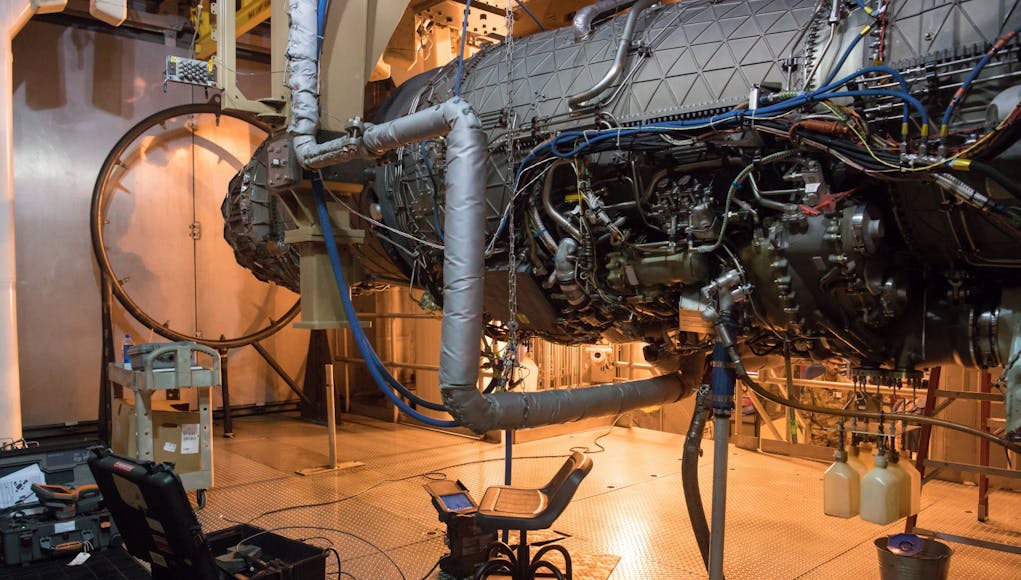
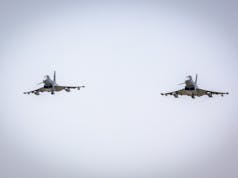




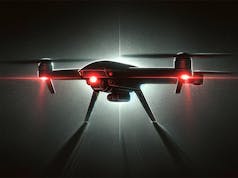


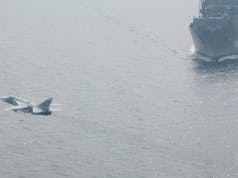
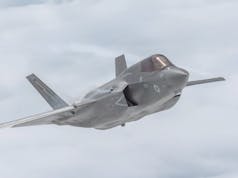

But Andy there would have been a lot more bits had the RR joint alternative engine the F136 been funded. Another political move by the US DoD to keep the UK technology base suppressed. Its been almost 7 years since the 136 was dumped. It was considered to be more advanced than the F135, but foreign.
The R136 was 60% General Electric and 40% Rolls Royce (split between RR is Bristol and RR in Indianapolis). So I doubt the DoD stopped funding its development because it had a minority ‘foreign’ component.
More likely it thought it could spend the projected $2 billion to finish development on other things.
From what I can gather, the decision to ditch the alternative engine was undertaken by the Obama administration simply to save money. The same mindset was also used to curtain the F22 at just under 200 citing that Russia and China would not have a stealth aircraft flying for a good 20 years and then China revealed to the world , the J20 just 2 years later. Cancellation of that alternative engine is really going to come back and haunt the F35 program.
But the original point of funding a second engine was to create competition and drive down cost. The f136 engine was on the bench the better engine. P&W just better at lobbying than GE and RR imo.
Surely it was an absurd notion to offer 2 engines. 2 different huge development costs and if both put in service only half the benefits of efficiency in numbers.
Wasn’t this F136 engine based around thrust vectoring as used in the Boeing plane?
The F16 provides you with a choice of engines, as does the Merlin. There are more.
How good are military jet engines compared with those found in airliners?
There’s a huge amount of work going on to make commercial jet engines more fuel efficient does that get transferred or are they completely different?
Very different, the thrust to weight ratios for modern fighter jets is much higher than required for commercial airliners. You could take an engine from business jet and make a passable training aircraft but you couldn’t expect ‘fighter’ performance on a military jet using COTs engines.
Areas like materials there’s a lot of cross over.
Yes and no. A fighter’s jet engine can be either a turbojet or a low by-pass turbofan. I’m ignoring exotic combination, ramjet or rocket engines. A turbojet is where all the air at the face of the engine passes through the core such as the Olympus used on Concorde. A low-bypass turbo fan has a percentage of air at the face of the engine that does not go through the core. The older designs used this as a coolant medium for the outside of the engine and the air was routed directly to the exhaust pipe, which then had fuel introduced to it to give reheat. The turbojet fell out favour as it was found that by putting some of the by-passing air back into the core, more power could be generated when not in reheat.
Today, we are seeing variable flow low by-pass turbofans. This is where the by-pass air is routed to various stages of the engine. It not only helps the cooling, but also increases the power. For instance the EJ200 has by-pass air introduced to the turbine stage. This not only helps to cool the blades, but due to the rapid heating and expansion of the air being introduced, it significantly increases the pressure on the blades helping to develop more power. This is one of the reasons the Typhoon with a pair of EJ200s can supercruise without using reheat. As a fighter engine, they are designed for quick throttle response and outright power, not fuel efficiency.
The other engine that was being developed for the YF22/23 program, the GE F120 was a variable cycle engine. This took the control of the by-pass air to the next level. The by-pass air was introduced to the other stages, such as the compressor and intermediate as well as the burners and turbine stages. This made the engine capable of swapping between a gas turbine and turbojet. It allowed the engine to generate more power, but also allows the engine to operate at higher altitudes. The F120 engine was used as the basis for the F35’s alternative engine, the F136, which was jointly developed between GE and RR. The Obama administration cancelled the funding, so development was halted. The research that went into the F136 is being used by GE in their new adaptive cycle engine, which they’re hoping will be used by the future US Airforce/Navy Fighters. The next iteration of RR EJ-XXX engines will be adaptive cycle engines based on the research developed in the F136 engine. This will give the engine the option of either more instantaneous thrust or be more fuel efficient thereby giving the aircraft increased range.
A modern commercial jet engine is now a high by-pass turbofan. It should be called a tandem fan gas turbine as it’s really two parts i.e. the core and the high flow fan attached to the front compressor stage. This front fan flows a lot of air at relatively slow speeds. They are designed to work only at subsonic speeds. By moving a large mass of air slowly generates less noise, which has become more important recently. Hence, why airliners don’t use turbojets any more. It also allows the engine to develop more outright power, as its now shifting considerably more air.
The core of the RR Trent series of engines uses a three shaft design. This allows the various stages i.e. front fan, compressor, intermediate and turbine to spin at different speeds, which improves fuel efficiency, not power. Most fighter type engines use a two shaft design. The engines burners are slightly different to those found on say the EJ200, as they aren’t designed for the heat generated. As a fighter hasn’t the space for a large front fan and requires speed, the other method of developing more thrust, is to significantly heat the air in the burners. To withstand the elevated temperatures exotic super alloys are used and additional cooling is fed to the outside of the burners and turbine blades. The QE class use the RR MT30 which is based on the RR Trent 800 airliner engine. This is the core of the Trent engine minus the front fan. As a commercial engine for say an airliner, the engines are designed to develop a lot of power subsonically, but have a relatively poor throttle response compared to a fighter’s engine. They are designed with a sweet spot for maximum fuel efficiency, where the airliner is most aerodynamically efficient for long distance travel.
Due to the stress put on a military jet engine they are serviced much more frequently. For example an engine fitted to a Typhoon will have magnetic chip detectors, that are inspected on a fixed basis every week, but if the aircraft is doing red flag or airshows these will be inspected more regularly. An airliner by comparison does not have these high levels of stress put on its engines, therefore their inspection regime is not as frequent. By measuring the amount of debris on the magnetic chips the engines life can be predicted. You will get a normal amount of wear debris from bearings and seals, but if the inspection shows a increase in debris the inspections get more frequent or the engine gets pulled for a strip down.
Thanks for the incredibly informative reply.
Thanks. That was an amazing reply.